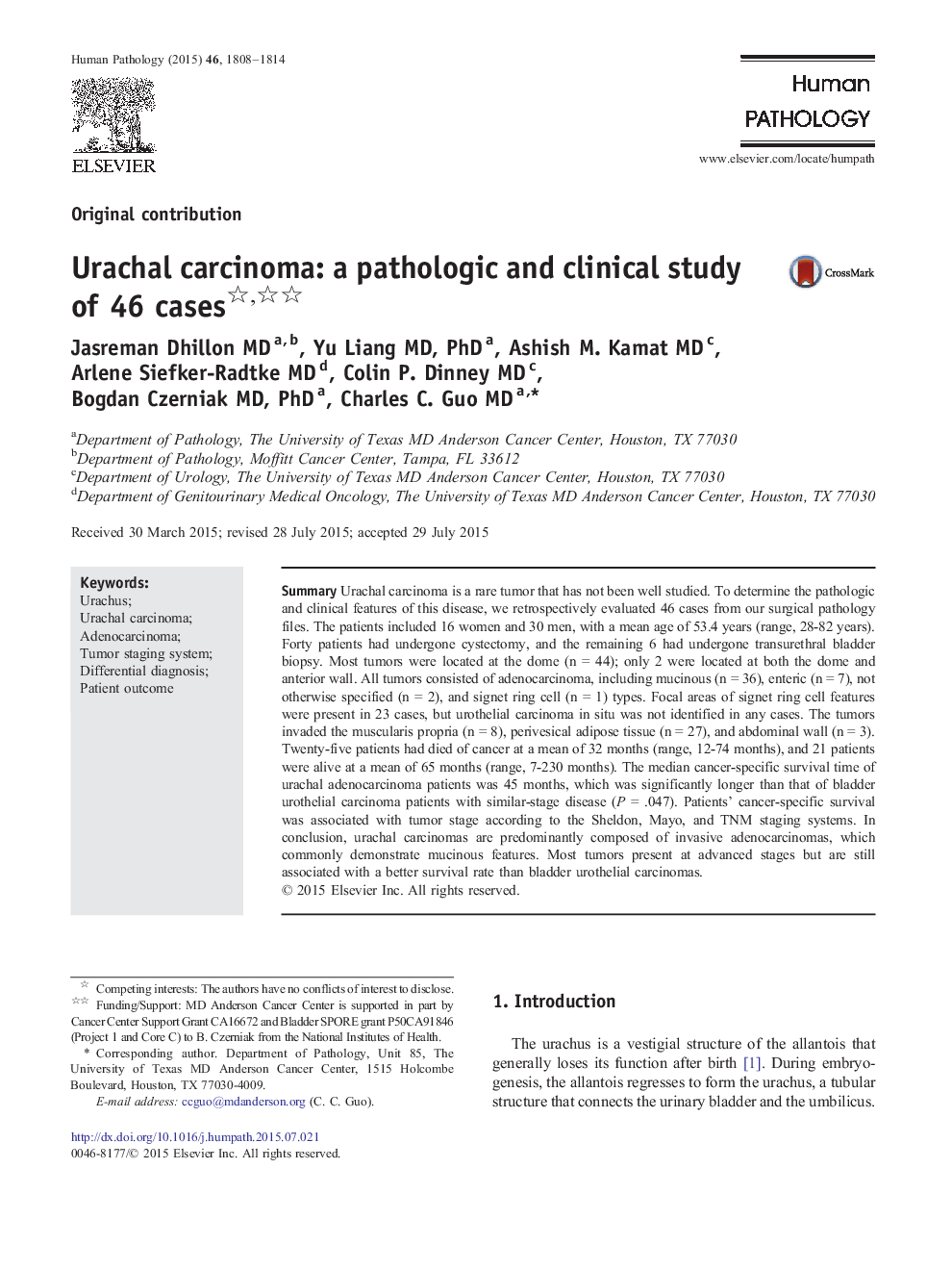| Article ID | Journal | Published Year | Pages | File Type |
|---|---|---|---|---|
| 4132686 | Human Pathology | 2015 | 7 Pages |
SummaryUrachal carcinoma is a rare tumor that has not been well studied. To determine the pathologic and clinical features of this disease, we retrospectively evaluated 46 cases from our surgical pathology files. The patients included 16 women and 30 men, with a mean age of 53.4 years (range, 28-82 years). Forty patients had undergone cystectomy, and the remaining 6 had undergone transurethral bladder biopsy. Most tumors were located at the dome (n = 44); only 2 were located at both the dome and anterior wall. All tumors consisted of adenocarcinoma, including mucinous (n = 36), enteric (n = 7), not otherwise specified (n = 2), and signet ring cell (n = 1) types. Focal areas of signet ring cell features were present in 23 cases, but urothelial carcinoma in situ was not identified in any cases. The tumors invaded the muscularis propria (n = 8), perivesical adipose tissue (n = 27), and abdominal wall (n = 3). Twenty-five patients had died of cancer at a mean of 32 months (range, 12-74 months), and 21 patients were alive at a mean of 65 months (range, 7-230 months). The median cancer-specific survival time of urachal adenocarcinoma patients was 45 months, which was significantly longer than that of bladder urothelial carcinoma patients with similar-stage disease (P = .047). Patients' cancer-specific survival was associated with tumor stage according to the Sheldon, Mayo, and TNM staging systems. In conclusion, urachal carcinomas are predominantly composed of invasive adenocarcinomas, which commonly demonstrate mucinous features. Most tumors present at advanced stages but are still associated with a better survival rate than bladder urothelial carcinomas.
